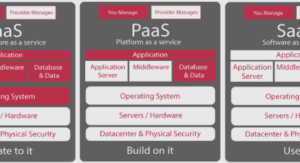System Management Services
Sun Fire High-End Systems
The system controller (SC) in Sun Fire high-end systems is a multifunction, CP1500- or CP2140-based printed circuit board (PCB) that provides critical services and resources required for the operation and control of the Sun Fire system. A Sun Fire high-end system is often referred to as the platform. System boards within the platform can be logically grouped together into separately bootable systems called dynamic system domains, or simply domains. Up to 18 domains can exist simultaneously on a single Sun Fire E25K/15K, and up to 9 domains on the Sun Fire E20K/12K. (Domains are introduced in this chapter, and are described in more detail in Chapter 5). The SMS software lets you control and monitor domains, as well as the platform itself.
The failover functionality between the SCs is controlled by daemons running on the main and spare SCs. These daemons communicate across private communication paths built into the Sun Fire platform. Other than the communication between these daemons, there is no special trust relationship between the two SCs.Configure the two SCs with the same configuration. This duplication includes the Solaris Operating System (OS), SMS software, security modifications, patch installations, and all other system configurations. SMS software packages are installed on the SC. In addition, SMS communicates with the Sun Fire high-end system over an Ethernet connection. See “Management Network Services” on page 184.Note – SMS 1.6 cannot communicate with SMS 1.4.1 across the I2 network. If one of the SCs is running SMS 1.4.1 and the other is running SMS 1.6, the I2 network tests will fail, and the SCs will communicate instead through high-availability SRAM (HASRAM) For information about the I2 network, see “I2 Network” on page 182.
SMS 1.6 supports Sun Fire high-end domains running the Solaris 8 2/04, Solaris 9 4/04, Solaris 10 3/05, Solaris 10 1/06, and Solaris 10 6/06 OSs. SMS 1.6 supports the Solaris 10 1/06, Solaris 10 6/06, Solaris 9 4/04, Solaris 9 9/04, and Solaris 9 9/05 OSs on the system controllers. The commands provided with the SMS software can be used remotely.
■ Dynamically reconfigure a domain so that currently installed system boards can be logically attached to or detached from the OS while the domain continues running in multiuser mode. This feature is known as dynamic reconfiguration and is described in the System Management Services (SMS) 1.6 Dynamic Reconfiguration User Guide. (A system board can be physically swapped in and out when it is not attached to a domain, while the system continues running in multiuser mode).
■ Dynamically reconfigure a domain for which the administrator has privileges, so that currently installed system boards can be logically attached to or detachedfrom the OS while the domain continues running in multiuser mode. This feature is known as dynamic reconfiguration and is described in the System Management Services (SMS) 1.6 Dynamic Reconfiguration User Guide. (A system board can be physically swapped in and out when it is not attached to a domain, while the system continues running in multiuser mode.)
A voltage core monitoring parameter (VCMON) was added to the SMS software. When VCMON is enabled, it monitors any voltage changes or drifts on the processors. If VCMON detects an upward change in voltage (which usuallyindicates a socket attach issue), it notifies the user with an FMA event and marks the component health status (CHS) of that processor as faulty. SMS uses a distributed client-server architecture. init(1M) starts, and restarts as necessary, one process: ssd(1M). ssd is responsible for monitoring all other SMS processes and restarting them as necessary. See FIGURE 4-1. The Sun Fire high-end systems platform, the SC, and other workstations communicate over Ethernet. You perform SMS operations by entering commands on the SC console after remotely logging in to the SC from another workstation on the local area network (LAN). You must log in as a user with the appropriate platform or domain privileges if you want to perform SMS operations, such as monitoringand controlling the platform.





